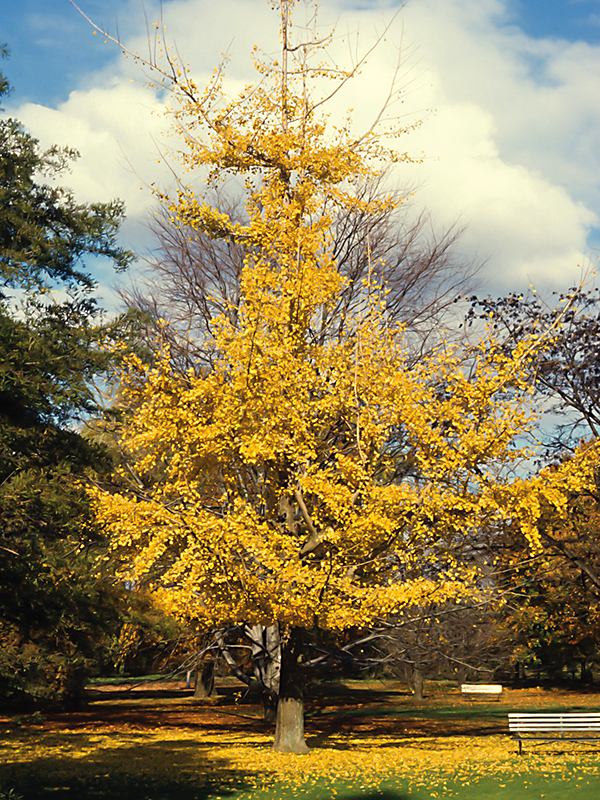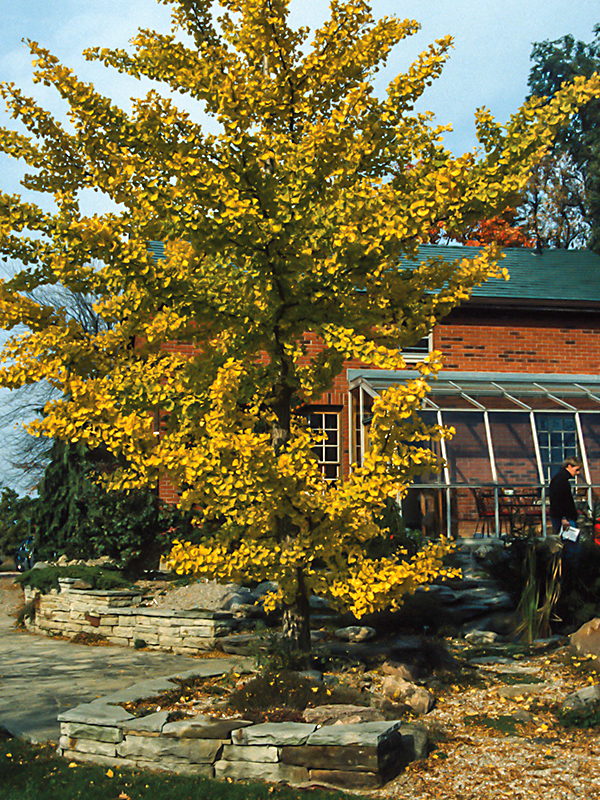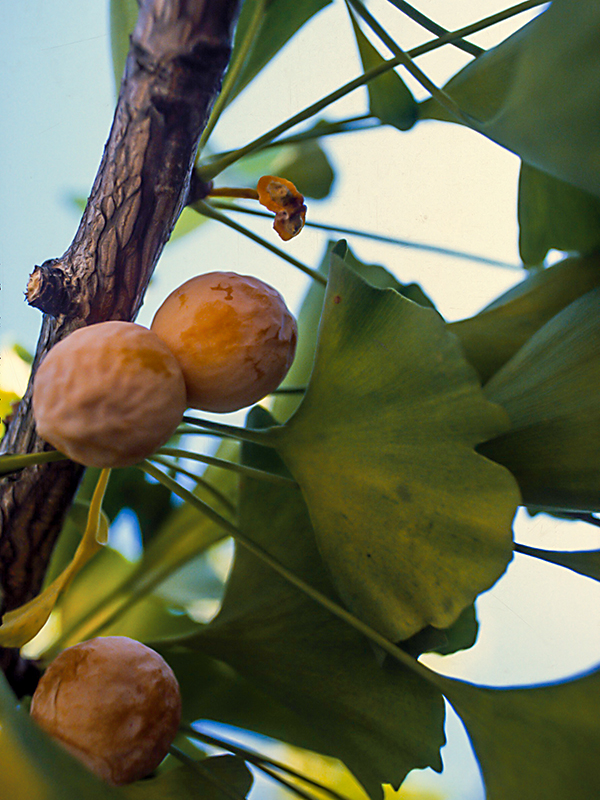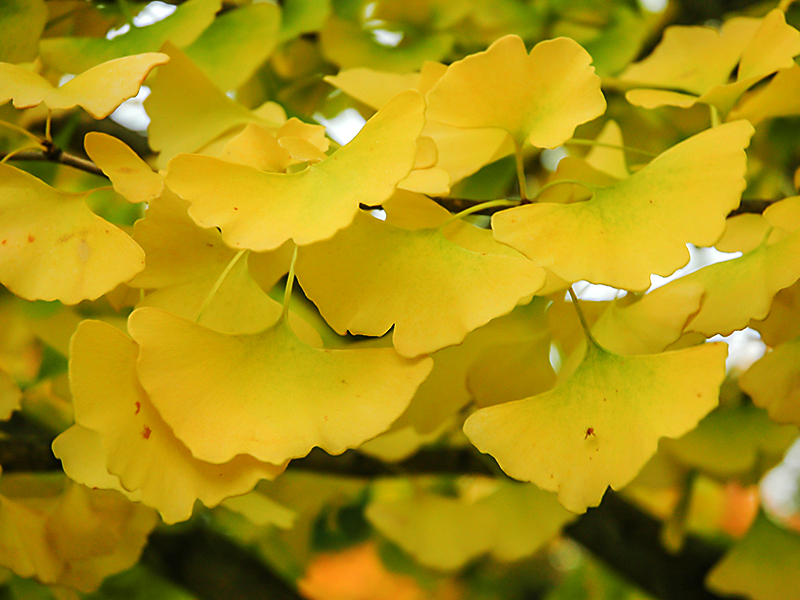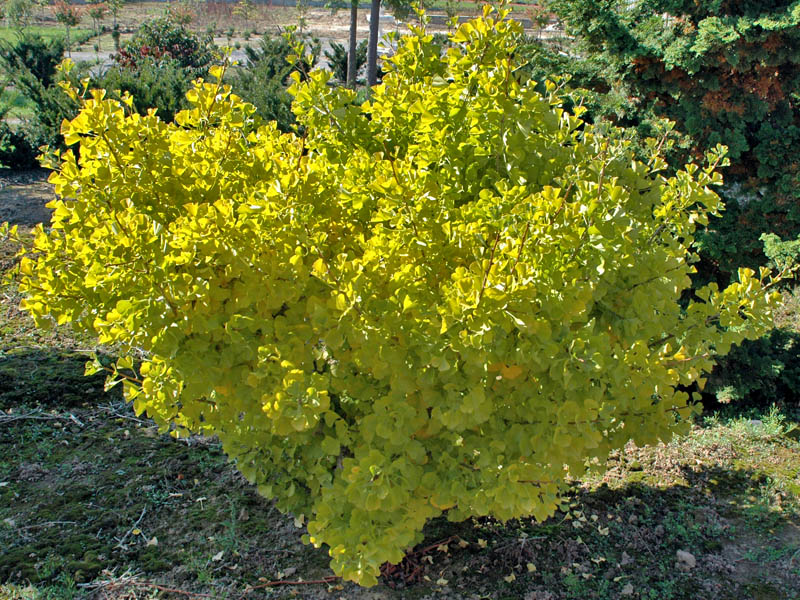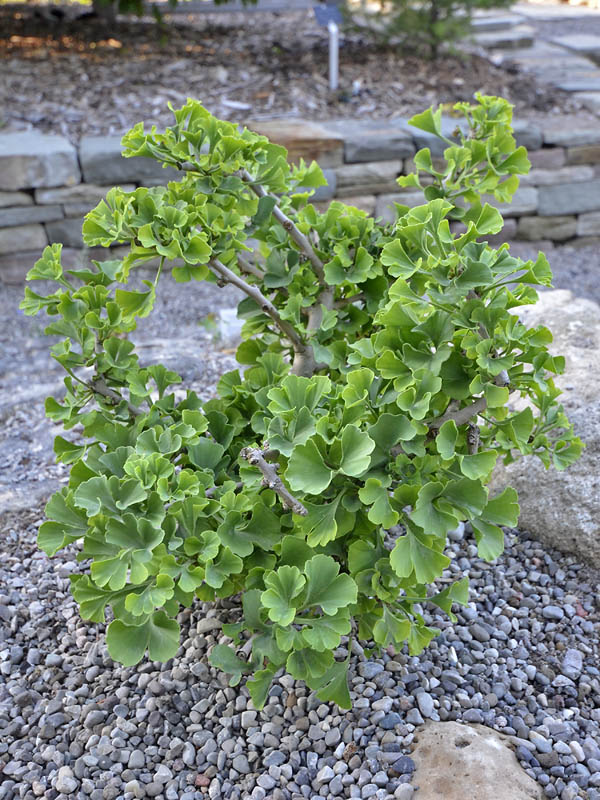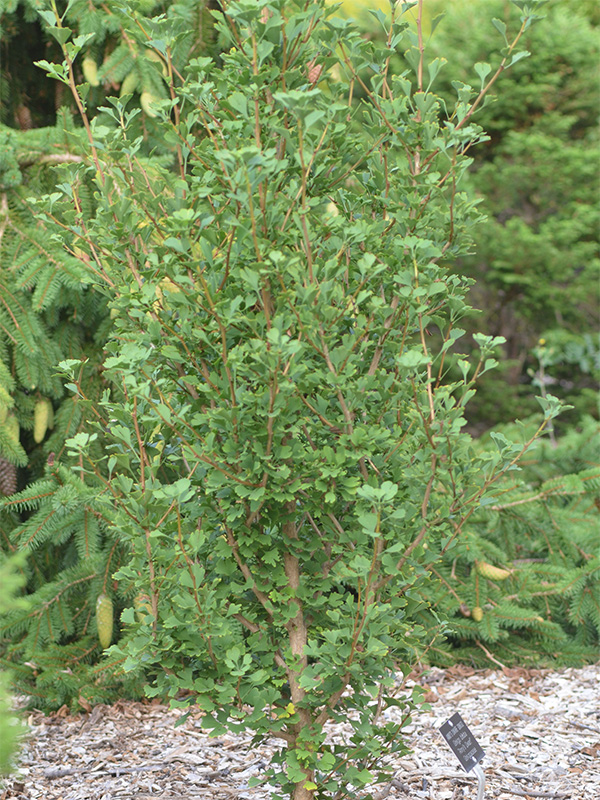
Woody > Ginkgo > Ginkgo biloba > Ginkgo biloba
Ginkgo biloba
Maidenhair Tree

"
A true living fossil, the only member of its family and genus, the Ginkgo dates back to prehistoric time via fossil records. It does not exist in nature but is found only in cultivated landscapes, having survived centuries in Buddhist temple gardens in China. It is a class tree that is well known but often overlooked for its brilliant egg-yellow autumn colour. The leaves carpet the ground simultaneously with gold when they appear to drop all at once. Tolerant of some of the most inhospitable conditions that a horticulturist can throw at it, it is one of the most adaptable trees I know. The female produces fruit in quantity, and although I find them attractive as they ripen in September others may find the sickly smell offensive. Since most plants in production are grafted, this should not be a problem or concern for most. There are many excellent cultivars of this plant available and are worth trying. I have never seen an insect or disease that affects the tree and most often the leaves as they drop from the tree in autumn are as perfect as they were in spring.
Michael Pascoe, NDP., ODH., CLT., MSc. (Plant Conservation)
"
| Family |
| Ginkgoaceae |
| Genus |
| Ginkgo |
| Species |
| biloba |
| Category |
| Woody |
| Type |
| Tree (deciduous) |
| Pronunciation |
| USDA Hardiness Zone |
| 4 - 8 |
| Canadian Hardiness Zone |
| 2a - 8a |
| RHS Hardiness Zone |
| H4 - H7 |
| Temperature (°C) |
| -34 - (-9) |
| Temperature (°F) |
| -30 - 20 |
| Height |
| 15 m |
| General Description |
| An unusual tree that is both pollution tolerant and tolerant of lean, dry soils. |
| Shape |
| Sparse, but spreading crown. |
| Growth |
| Medium |
| ID Characteristic |
| Easily identifiable by its unique fan shaped leaves. |
| Pests |
| None. |
| Habitat |
| Mountains. |
| Fruit Description |
| Green but yellow when ripe, orbicular, about 1.5cm across and smelling of vomit when ripe. |
| Colour Description |
| Fantastic yellow-gold autumn colour, with all the leaves turning at the same time. |
| Texture Description |
| Coarse textured tree due to the fact that it produces little lateral branching. |
| Notable Specimens |
| The University of Western Ontario, London, Ontario, Canada has a spectacular female plant. |
| Propagation |
| Seed but grafted for horticultural cultivars and male only forms. |
| Ethnobotanical Uses (Disclaimer) |
| Traditionally, the wood of a Ginkgo tree is used to make religious articles and carvings. Some of the oldest cultivated Ginkgo trees are found surrounding Buddhist temples and religious shrines in China, eluding to their ancient religious value in certain cultures. Ginkgo’s fine, light wood is also traditionally used to top chess sets and other delicate wooden structures. Still today, in some Asian cultures, these trees are planted in gardens to signify momentous occasions. Medically, Ginkgo has been used for many centuries in ancient Chinese practices, but has also become popular in today’s pharmaceutical industry. Now in several countries, Ginkgo biloba plantations are cultivated for medicinal purposes. Traditionally, the fruit is cooked and used for curing respiratory ailments. The dried fruit can also be eaten however consuming too much will cause poisoning. Dried leaves and leaf extracts are widely used as herbs, and can be found commonly in health food stores. |



